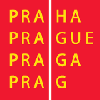Speaker
Description
Certain data features that were attributed to quark-gluon plasma (QGP) formation in more-central A-A collisions -- evidence for radial flow and jet quenching in pt spectra, v2, v3, etc. in azimuth correlations, one or two "ridge" structures in long-range angular correlations -- have more recently been observed in high-multiplicity p-A and even p-p collisions. Arguing by analogy with A-A collisions it is suggested that a flowing dense medium or QGP may be formed even in small collision systems. Alternatively, one could argue that data features appearing in small low-density systems should not be associated with QGP, and alternative explanations are required for any collision system. In this talk I focus on evidence (or not) for radial flow and jet modification in pt spectra from several collision systems. I present a comparison of identified-hadron (PID) pt spectra from p-p, p-Pb, Au-Au and Pb-Pb collisions. The PID spectra are described with a two-component (soft + hard) model of hadron production. To the statistical limits of spectrum data radial flow is excluded from p-p and p-Pb spectra for any charge multiplicity, and is unlikely in A-A collisions as well. Jet modification is also excluded from p-p and p-Pb collisions, whereas strong modification is evident in more-central A-A collisions as has long been evident. The combined results suggest that QGP formation can be questioned for any collision system and that an alternative non-QGP explanation is required for v2 data.

